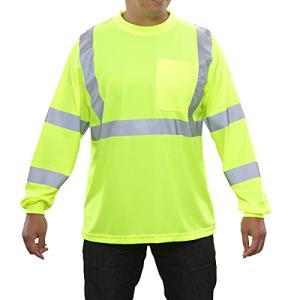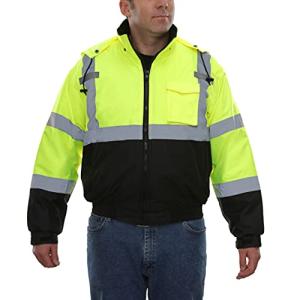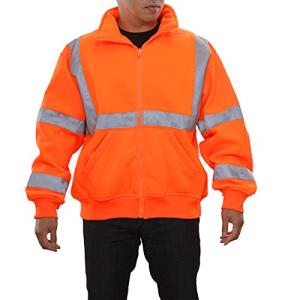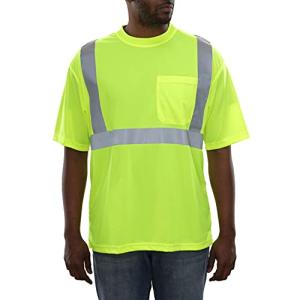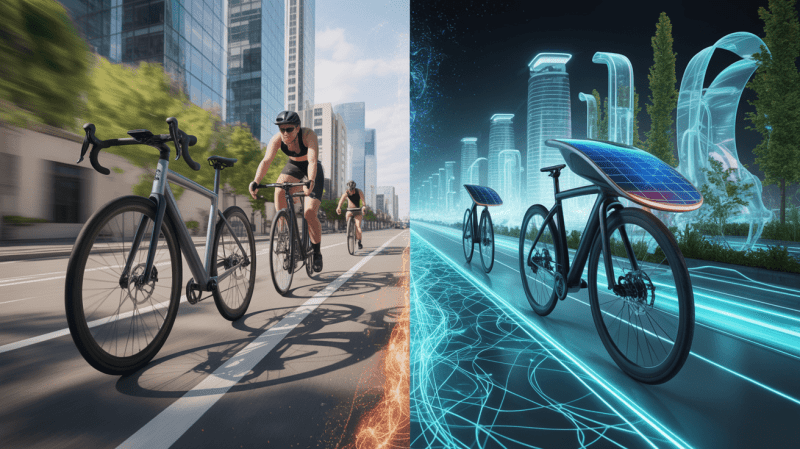Tips for navigating traffic and keeping everyone safe while you ride:

E-bikes are becoming more popular, but they raise safety concerns on roads and bike paths. It's important for riders to know how to ride safely around pedestrians and cars.
Safe e-bike riding is more than just wearing protective gear. It also means knowing traffic rules and being mindful of pedestrians. By following these safety tips, riders can lower their risk of accidents.
This article will share important e-bike safety tips and safe riding practices. These tips will help you ride safely around pedestrians and cars, enhancing your e-bike experience and making it safer.
Key Takeaways
- Understanding e-bike safety fundamentals is crucial.
- Essential safety equipment is a must for all e-bike riders.
- Familiarity with e-bike traffic rules enhances safety.
- Pedestrian awareness is key to safe e-bike riding.
- Core techniques for safe riding around pedestrians and cars will be discussed.
Understanding E-Bike Safety Fundamentals
E-bikes are gaining popularity, and knowing how to stay safe is crucial. They differ from regular bikes due to their motor. This means they can go faster and handle differently.
How E-Bikes Differ from Traditional Bicycles
E-bikes have a motor that assists you while pedaling, making it easier to ride. But, this can make riders feel less careful. It's essential for e-bike riders to be aware of these differences and ride safely.
Common Safety Misconceptions
Many think e-bikes are safer because they help with pedaling. But, research shows e-bike riders might crash more than regular bike riders. Riders need to be careful and take steps to stay safe.
The Importance of Responsible E-Bike Riding
Safe e-bike riding means knowing your bike's limits and being aware of your surroundings. Following traffic rules also helps. Safe tips include riding at a safe speed, using bike lanes, and being visible to others.
Essential Safety Equipment for E-Bike Riders
Riding an e-bike safely is more than just following traffic rules. It also means having the right safety gear. As e-bikes become more common, places are making rules to keep riders safe.
Helmet and Protective Gear Requirements
A helmet is the most important safety item for e-bike riders. Many places now require helmets. Wearing knee pads and elbow pads can also help, especially for young riders or those in risky areas.
Visibility Equipment: Lights, Reflectors, and Bright Clothing
Being seen is key for e-bike riders. Lights and reflectors are crucial, especially at night. Wearing bright clothes also helps riders be seen.
Communication Tools: Bells, Horns, and Hand Signals
Good communication is vital for safe e-bike riding. Bells and horns tell others you're there. Hand signals show your plans. These tools help avoid accidents and keep riders safe.
E-Bike Specific Safety Features
Some e-bikes have special safety features, such as built-in lights and improved brakes. These features provide an added layer of safety for riders.
| Safety Equipment | Description | Importance Level |
|---|---|---|
| Helmet | Protects the rider's head in case of a crash | High |
| Lights and Reflectors | Enhances visibility to motorists and pedestrians | High |
| Bells/Horns | Alerts others to the e-bike's presence | Medium |
| Bright Clothing | Increases the rider's visibility | Medium |
Safety experts say, "The right safety gear can greatly lower injury risk when riding an e-bike." Therefore, it's essential for riders to wear the correct safety gear.
"Safety isn't just about protecting yourself; it's about being aware of your surroundings and the safety of others around you."
Legal Requirements and Traffic Rules for E-Bikes
It's essential to understand the laws and regulations governing e-bikes to ride safely and responsibly. The rules for e-bikes vary significantly from state to state and even within cities. This affects where you can ride and how fast you can go.
Federal and State E-Bike Classifications
E-bikes are categorized differently in various locations. This means that some states have rules based on the speed and power of their vehicles.
Where E-Bikes Can Legally Ride
Where you can ride an e-bike depends on its type. Riders should check local laws to know where they can go.
Speed Limits and Power Restrictions
E-bikes have speed limits and power rules that vary by place. It's essential to know these to avoid fines.
Right-of-Way Rules for E-Bike Riders
E-bike riders must follow right-of-way rules for safety. This is important for sharing paths with pedestrians and cars.
Safe E-Bike Riding Around Pedestrians and Cars: Core Techniques

To ride safely, e-bike riders need to know how to share spaces with others. This means maintaining low speeds, passing correctly, and riding defensively.
Maintaining Safe Speeds in Shared Spaces
E-bike riders should always be aware of their surroundings and slow down when necessary. In busy areas or on bike paths, going slower can help prevent accidents.
Proper Passing Techniques for Pedestrians
When passing pedestrians, use a bell or say hello to warn them. Always pass on the left if possible, and give them plenty of room.
Defensive Riding Strategies Around Vehicles
Defensive riding means anticipating what drivers might do and being prepared for unexpected situations. Keep a safe distance from parked cars and watch out for doors opening.
Navigating Intersections Safely
Intersections are tricky and need careful watching and signaling. E-bike riders must stay alert and follow the rules.
Left Turn Techniques
When turning left, signal your intention and check for oncoming traffic. Use bike lanes or designated lanes whenever possible.
Right Turn Safety
Before turning right, look out for people and bikes. Signal your turn and go slowly.
Crossing Major Intersections
At big intersections, follow the traffic lights and be ready to stop. Make eye contact with drivers to make sure they see you.
| Safety Technique | Description | Benefit |
|---|---|---|
| Maintaining Safe Speeds | Adjusting speed according to surroundings | Reduces accident risk |
| Proper Passing Techniques | Announcing presence and passing with care | Prevents pedestrian collisions |
| Defensive Riding | Anticipating motorist actions and being prepared | Enhances overall safety |
Handling Challenging Urban Scenarios
Urban e-bike riding is all about being aware and flexible. You face many risks, such as crowded sidewalks and adverse weather conditions.
Navigating Crowded Sidewalks and Crosswalks
When riding on busy sidewalks and crosswalks, it is essential to be cautious and patient. Always be ready to give way to walkers and slow down or stop when needed.
- Be aware of pedestrian traffic and slow down accordingly.
- Use bells or other warning devices to alert pedestrians.
- Yield to pedestrians, especially when crossing the street.
Dealing with Distracted Pedestrians and Drivers
Distracted walkers and drivers pose significant risks to e-bike riders. You must stay alert to avoid dangers.
Stay alert for people using their phones or other distractions. Be ready to stop or swerve if needed.
Managing Blind Spots and Door Zones
Blind spots around parked cars and door zones are very dangerous. Be careful when riding near parked vehicles.
| Hazard | Precaution | Action |
|---|---|---|
| Blind Spots | Stay visible, make eye contact with drivers if possible | Slow down or change lanes |
| Door Zones | Maintain a safe distance from parked cars | Be prepared to stop or swerve if a door opens |
Riding in Adverse Weather Conditions
Bad weather, such as rain or snow, means you need to slow down and brake carefully. E-bike riders should slow down and use both brakes effectively to maintain control.
Reduce your speed to match the road conditions, and use both brakes to slow down or stop.
Communication and Etiquette for E-Bike Riders

E-bike riders need to learn how to communicate well. This helps avoid misunderstandings and conflicts on paths and roads. Good communication ensures everyone has a safe and enjoyable ride.
Effective Signaling to Pedestrians and Drivers
Signaling your plans is very important for e-bike riders. Hand signals for turns or changes in direction warn pedestrians and drivers. This helps lower the chance of accidents.
Verbal Communication Best Practices
Verbal cues can also be helpful in some cases. Saying "On your left" or "Coming through" politely alerts others. It helps avoid surprising pedestrians.
Sharing Multi-Use Paths Respectfully
E-bike riders should be careful on multi-use paths. They need to watch out for walkers, joggers, and dog owners. Always yield and be ready to slow down or stop.
De-escalating Potential Conflicts
Even with the best intentions, conflicts can happen. Staying calm and polite is crucial. Saying sorry if you've caused trouble can help solve the issue peacefully.
| Etiquette Tip | Description | Benefit |
|---|---|---|
| Signal Intentions | Use hand signals to indicate turns or changes in direction. | Reduces risk of accidents by alerting others. |
| Verbal Warnings | Use polite verbal warnings to alert pedestrians. | Prevents startling others and promotes safe passing. |
| Yield to Others | Be prepared to slow down or stop for other path users. | Fosters a respectful and safe environment for all. |
Advanced Safety Techniques and Emergency Preparedness
E-bike safety is more than just following rules. It's about learning advanced techniques and being ready for emergencies. These skills can significantly reduce the risk of accidents and enhance the riding experience.
Predictive Riding and Anticipating Hazards
Predictive riding means looking ahead to possible dangers. It's about always being aware of your surroundings. This includes road conditions, pedestrians, and vehicles in motion. By seeing dangers early, riders can act fast to stay safe.
Emergency Maneuvers and Quick Stops
Knowing how to do emergency maneuvers and stop quickly is key. E-bike riders should practice stopping and learn how to handle their bike in emergencies.
Managing E-Bike Power and Speed Settings
Controlling your e-bike's power and speed is important for safe riding. Riders need to know how to change their bike's settings for different situations.
What to Do After a Near-Miss or Accident
If you have a close call or crash, knowing what to do is vital. Here are the steps:
- Immediate Safety Steps: Move to a safe spot and check for injuries.
- Reporting Procedures: Record what happened and report it to the authorities.
- Learning from Incidents: Think about what went wrong and how to avoid it next time.
By learning advanced safety skills and being prepared for emergencies, e-bike riders can significantly enhance their safety on the road.
Conclusion: Becoming a Responsible E-Bike Ambassador
E-bikes are gaining popularity, and it's essential for riders to promote safety and a positive cycling culture. To be a responsible e-bike ambassador, it is essential to follow safe riding practices. You should also respect other road and path users and advocate for e-bike safety.
By focusing on e-bike safety and riding responsibly, we can make cycling safer and more enjoyable for everyone. This shared effort helps create a welcoming environment for e-bikes. It makes the cycling experience better for all of us.
It's crucial to advocate for e-bike safety to improve how people view e-bike riding. By following safety rules and guidelines, we set a good example. This encourages others to ride safely too, promoting a culture of safe cycling.
As the number of e-bike riders grows, it's vital for us to promote safety and responsible riding. This ensures a safe and enjoyable experience for everyone on the roads and paths.
Disclaimer
This document is provided for general information purposes only and should not be relied upon as providing legal advice, technical, or specific operational guidance to the reader, whether as to the practices described in the document or the applicable legal requirements and regulations. just electric bikes.com expressly disclaims any responsibility for liability arising from or related to the use or misuse of any information in this document.

